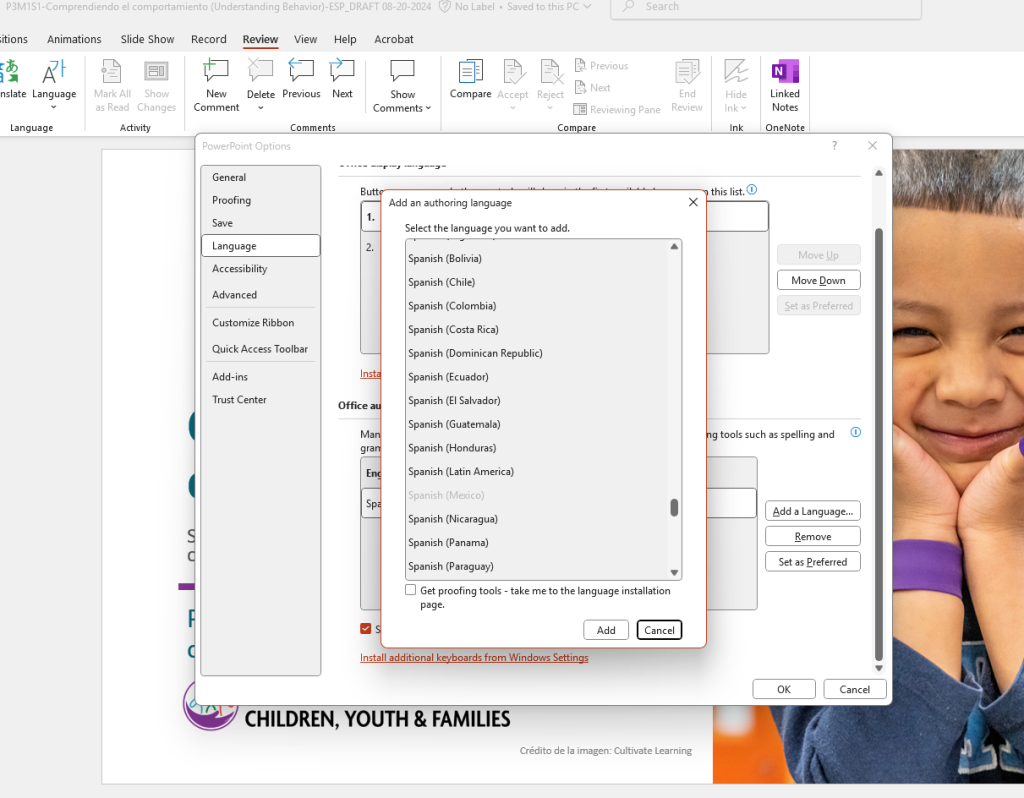Accessibility, Plain Language, and Readability
Readability
Cultivate Learning products are written for an 8th- to 10th-grade reading level on the Flesch Kincaid Grade Level scale in all languages. For Spanish speakers from countries with differently organized education systems, this level corresponds to a range from the second year of secundaria to the first year of bachillerato/preparatoria. Like other reading ease systems, the Flesch Kincaid formula is based on the number of words per sentence and syllables per word. There might be some differences depending on the product and who the intended audience is.
Some Cultivate Learning projects require specific reading levels. Be sure to check before writing or translating in any language. For example, the WA State Department of Children, Youth, and Families recommends Early Achievers informational materials are geared toward a 3rd to 5th grade reading level. However, unfamiliar terms can be introduced if descriptive information is shared with examples. This supports continued professionalization of early learning and may shift the reading level slightly. For example, the concept serve and return may be an unfamiliar one and therefore the term serve and return is unfamiliar. However, it can be introduced to the audience in the following way:
“Serve and return, when a caregiver notices and responds to a child’s communication (verbal or non-verbal), is important for healthy brain development.”
Checking Readability in Documents
Use the proofing function to check the reading level in a Word document. You can read more about the setting proofing languages in the Setting Proofing Language in Documents section.
Steps to check reading level using the proofing function:
- Select File > Options > Proofing.
- Check the box next to “Show readability statistics.” When you spell-check your document, the readability statistics should appear in a dialogue box.
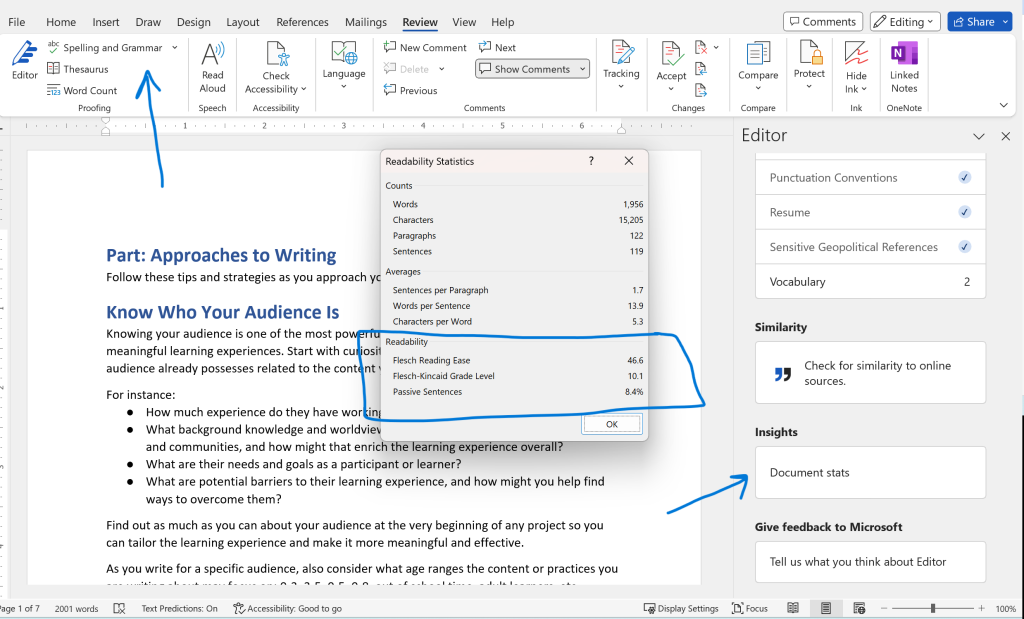
Setting Proofing Language in Documents
Set the proofing language to support writing for readability including spelling, grammar, and document stats.
Note: Templates created by the design team may already have the prooofing language set.
WORD Documents
Select the proofing langauge to help with assessing document stats. This can also support writing by identifying spelling and grammar errors. Read more about this feature on the Micropsoft Support page: Set Up or Change Languages Used to Check Spelling and Grammar
First, select Review > Language > Set Proofing Language.
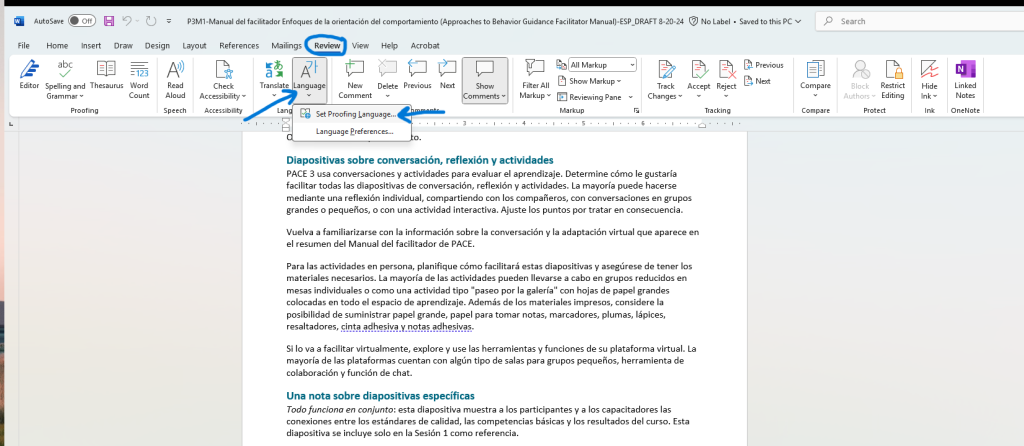
Then, choose the proper language from the drop down menu.
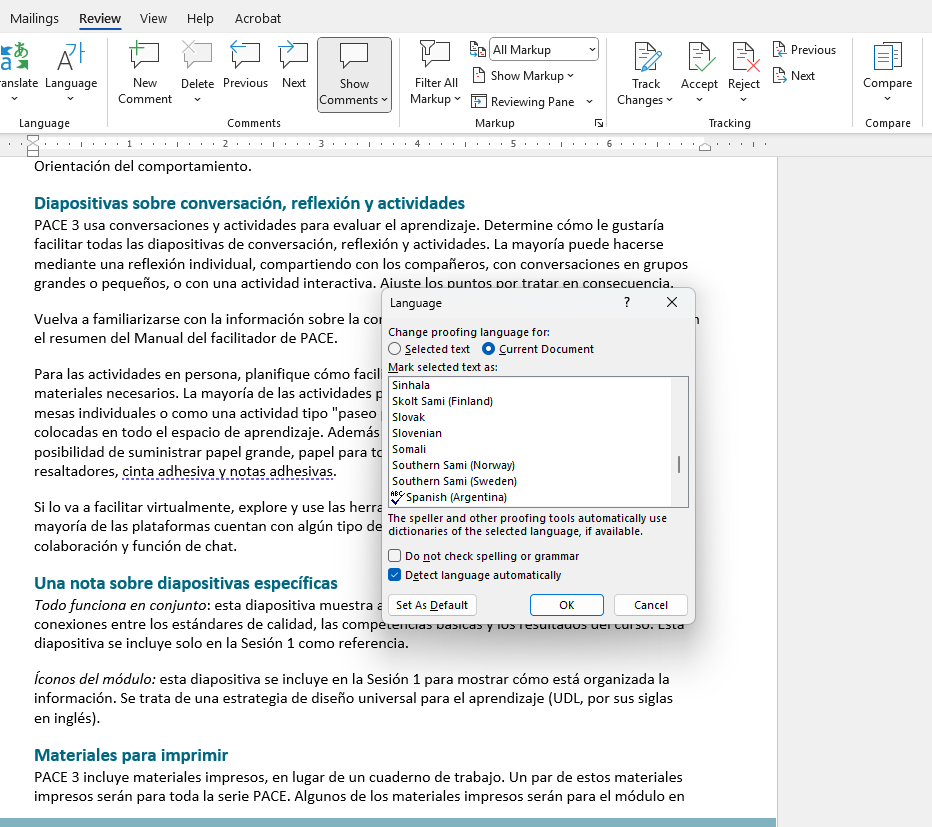
PowerPoint Documents
Use these steps to set the language preference in a PowerPoint document.
First, select Review > Language > Language Preference.
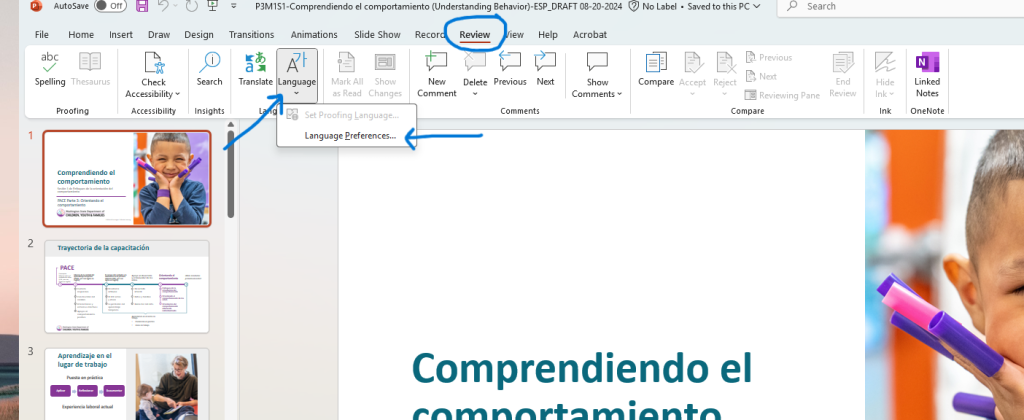
Next, add the proper language from the drop down menu.
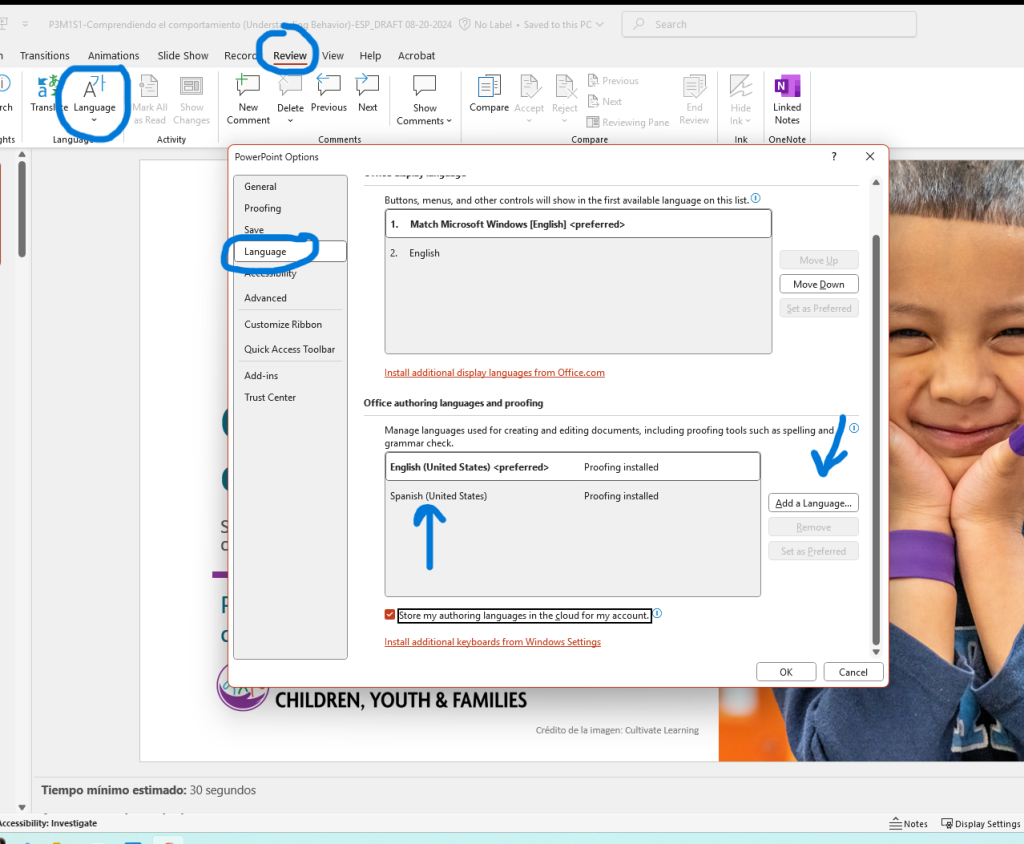
Example image of the language drop-down menu:
